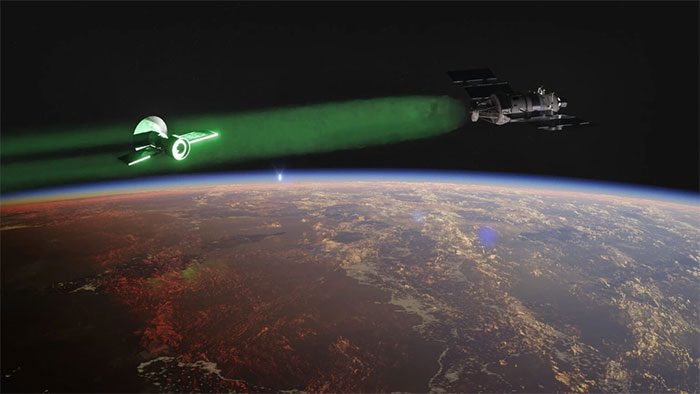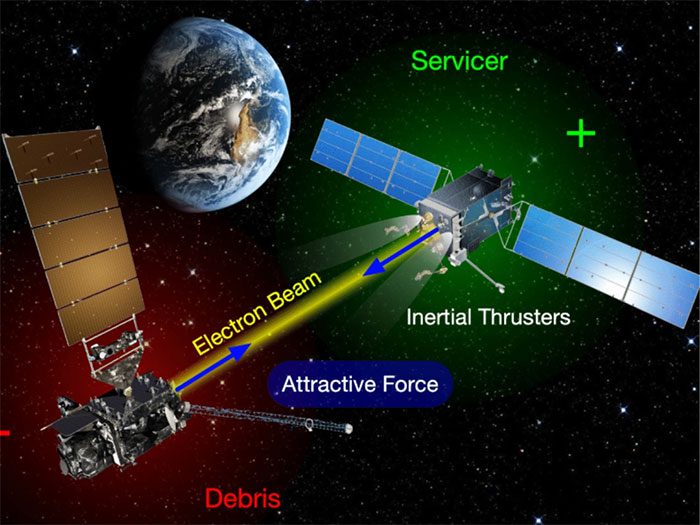The space debris tractor that we often see in some science fiction films may soon become a reality.
This technology has so far remained in the realm of fiction, but recently, researchers have been working to turn this idea into reality with the aim of cleaning Earth’s orbit of space debris.

The electrostatic tractor used for cleaning space debris. (Image source: Trust my science).
The number of satellites orbiting the Earth has increased exponentially in recent years. By 2019, there were approximately 2,300 artificial objects placed in space by humans orbiting the Earth.
The rise of the commercial space industry is the main driver behind this surge, but it also raises growing concerns about space debris. These remnants pose several dangers, including the risk of collisions with other spacecraft or falling back to Earth.
In response to this challenge, researchers from the University of Colorado (USA) have launched an innovative project to tackle the issue of space debris in geostationary orbit.
This initiative is known as the electrostatic tractor, designed to create a spacecraft capable of handling debris in space using electrostatic attraction.
Professor Hanspeter Schaub, the head of the research, stated: “It is similar to the tractor beam you see in the Star Trek movies.”
Space Graveyard
The principle behind the electrostatic tractor is based on a system that combines spacecraft and an electron gun. The goal is to move space debris to a designated area far from Earth, serving as a “space graveyard,” where these remnants can exist indefinitely without causing issues.

The machine uses electrostatic attraction to pull drifting objects in space. (Image: Trust my science).
When the system is operational, the electron gun sends a beam to the target debris, giving the object a negative charge. Meanwhile, the tractor component on the spacecraft will carry a positive charge. This charge difference creates an electrostatic attraction between the two objects, sufficient to draw the debris towards the spacecraft.
This electrostatic attraction is calibrated to maintain a distance of 20 to 30 meters between the spacecraft and the debris to avoid collisions. Theoretically, this operation occurs at distances exceeding 300 kilometers in space.
Despite its potential, the electrostatic tractor project faces several challenges. In fact, the time required to remove a piece of debris can take up to three months.
This time disadvantage could be problematic, especially as the number of satellites orbiting Earth increases rapidly. For instance, SpaceX alone is deploying about 1,000 satellites each year. At this rate, one debris tractor would not be enough.
However, the biggest obstacle to this plan is the financial issue. Building a prototype will require millions of dollars, not to mention the cost of a full-scale system. In addition to the service spacecraft, launching the machine into space also requires a significant amount of funding.
If the team can overcome these financial difficulties, the project could become operational in about ten years, with initial testing.
Nevertheless, even if all these obstacles are overcome, it is important to note that the electrostatic tractor will not be able to clean the entire geostationary orbit, mainly due to its operational speed, making it unsuitable for removing small space debris.




















































